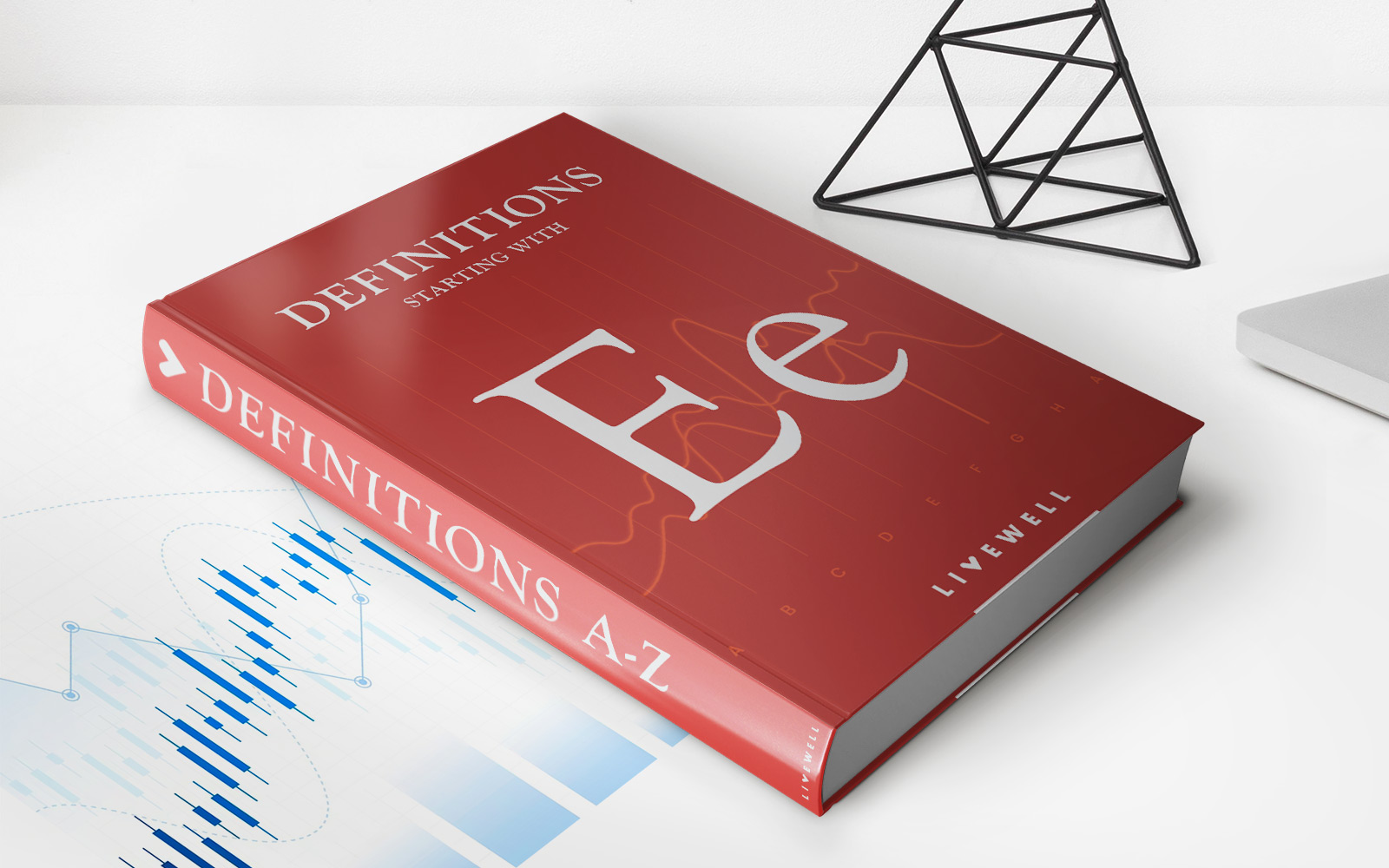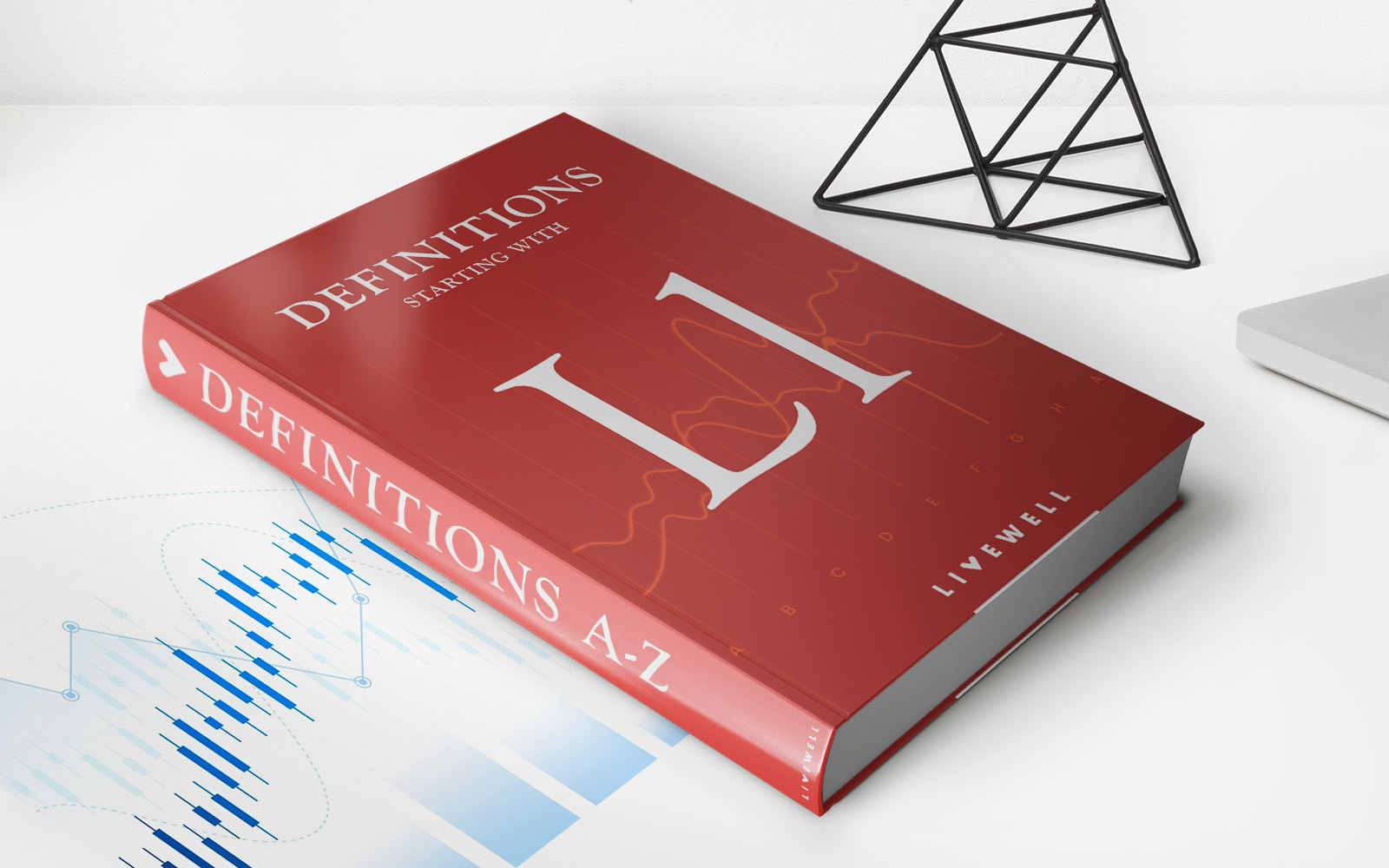Home>Finance>What Factors Impact The Cost Of Your Life Insurance Premium?


Finance
What Factors Impact The Cost Of Your Life Insurance Premium?
Modified: March 1, 2024
Discover the key Finance factors that influence the cost of your Life Insurance premium. Gain insights and make informed decisions to ensure optimal financial protection.
(Many of the links in this article redirect to a specific reviewed product. Your purchase of these products through affiliate links helps to generate commission for LiveWell, at no extra cost. Learn more)
Table of Contents
Introduction
When it comes to purchasing life insurance, one of the crucial factors to consider is the cost of the premium. The premium is the amount of money you pay regularly to maintain your life insurance coverage. However, have you ever wondered what determines the cost of your life insurance premium? Understanding the factors that impact the premium can help you make informed decisions and potentially save money.
Life insurance providers utilize various factors to assess the risk associated with insuring an individual. These factors help determine the likelihood of a claim being made and the potential financial impact on the insurance company. By evaluating these factors, insurers can calculate appropriate premiums for policyholders. While each insurance provider may have its own specific criteria and algorithms, certain key factors tend to have a significant influence on the cost of your life insurance premium.
In this article, we will explore some of the main factors that impact the cost of your life insurance premium. From age and gender to health and lifestyle choices, we will delve into each factor and discuss its relevance in determining your premium. By understanding these factors, you can better comprehend why your premium may vary from others and what steps you can take to potentially reduce it.
Age
One of the primary factors that influence the cost of your life insurance premium is your age. Generally, the younger you are when you purchase a life insurance policy, the lower your premium will be. This is because younger individuals are statistically less likely to experience health issues or pass away compared to older individuals.
Insurance providers consider age as a critical factor because the risk of mortality increases with age. Older individuals are more likely to have pre-existing health conditions or develop age-related illnesses, which can increase the probability of making a claim. As a result, insurers charge higher premiums to offset the potential financial risk associated with insuring older policyholders.
When purchasing life insurance, it is generally recommended to do so at a younger age to lock in lower premiums. By starting early, you can take advantage of your good health and demonstrated lower risk, resulting in more affordable coverage. Waiting until you are older may lead to higher premiums or even the possibility of being denied coverage altogether if you develop health issues.
Age also plays a role in determining the duration of your policy. For instance, if you are purchasing term life insurance, the length of coverage you can obtain will typically shorten as you get older. This means that if you wait until you are in your 50s or 60s to purchase a term life policy, you may only have a limited number of years covered, which can result in higher premiums. On the other hand, purchasing a policy at a younger age allows for longer coverage periods and more affordable premiums.
In summary, age is a significant factor in determining the cost of your life insurance premium. Starting the life insurance process at a younger age can help you secure more affordable coverage and potentially save money over time. Don’t wait until later in life to consider life insurance; the younger you are, the more advantageous it can be.
Gender
Another crucial factor that impacts the cost of your life insurance premium is your gender. In most cases, women tend to pay lower premiums than men for life insurance coverage. This is primarily because women have been statistically proven to have a longer life expectancy and are considered lower risk by insurance providers.
Life insurance companies assess risk based on actuarial tables that consider various demographic factors, including gender. These tables, compiled from extensive research and data analysis, reveal that women tend to live longer than men on average. As a result, insurance companies perceive insuring women as less risky since the likelihood of them making a claim during the policy term is lower.
It’s important to note that while women generally enjoy lower premiums, the gap between male and female premium rates has been closing in recent years. Insurance providers still consider other factors, such as age, health, occupation, and lifestyle choices, when determining premiums. However, the impact of gender should not be overlooked, as it can still contribute to differences in pricing.
It’s worth mentioning that some insurance products, such as gender-specific policies, cater to specific needs based on gender-related conditions. For example, certain policies may offer coverage for maternity-related expenses or provide additional benefits for women’s health screenings. These specialized policies may have different premium structures and considerations based on individual needs.
Ultimately, when considering life insurance, gender is a factor that can influence the cost of your premium. While women often receive more favorable rates due to their longer life expectancy, it’s essential to compare quotes from different insurance providers to ensure you are getting the best possible coverage at an affordable price. Consulting with a knowledgeable insurance professional can also help you navigate the complex landscape of gender-based insurance options and make informed decisions about your life insurance needs.
Health
Your health is one of the most significant factors that impact the cost of your life insurance premium. Insurance providers consider your current health, as well as any pre-existing medical conditions or potential health risks that may affect your longevity. Generally, individuals who are in better health are perceived as lower risk and typically pay lower premiums.
During the life insurance application process, you will likely be required to undergo a medical examination or provide information about your health history. This information helps the insurance company assess your overall health and determine the level of risk associated with insuring you.
Factors that can impact your life insurance premium include your body mass index (BMI), blood pressure, cholesterol levels, and any chronic illnesses or conditions you may have, such as diabetes or heart disease. Additionally, smoking or tobacco use is a significant health-related factor that can significantly increase your premium due to the increased risk of developing life-threatening diseases.
Insurance providers use actuarial data and underwriting guidelines to analyze health factors and assess the likelihood of a policyholder making a claim. Individuals with well-managed health conditions or those without any pre-existing medical conditions usually qualify for better rates. On the other hand, individuals with serious health issues may face higher premiums or even exclusions or denials of coverage.
It’s important to provide accurate and honest information about your health during the application process to ensure your policy is valid and your premium is correctly calculated. Lying or omitting important health information could result in the denial of a claim in the future.
If you have certain health conditions, it’s essential to explore options with insurance providers that specialize in high-risk cases or offer policies tailored to specific health conditions. These specialized policies may come with higher premiums, but they can provide coverage where traditional policies may not.
In summary, your health is a critical factor that influences the cost of your life insurance premium. Maintaining a healthy lifestyle, managing chronic conditions, and avoiding tobacco use can help you secure more affordable coverage. It’s essential to be transparent about your health during the application process to ensure you receive appropriate coverage and accurate premium pricing.
Smoking
One of the most significant factors that can impact the cost of your life insurance premium is whether or not you are a smoker. Smoking is strongly associated with numerous health risks and has been proven to significantly decrease life expectancy. As a result, insurance providers often charge higher premiums for smokers compared to non-smokers.
When you apply for life insurance, you will typically be asked about your smoking habits and tobacco use. It’s essential to be honest and provide accurate information to ensure your policy is valid. Insurance companies have ways to verify your smoking status, such as through medical records or nicotine testing, so any misrepresentation can result in the denial of a claim in the future.
The reason smoking affects life insurance premiums is due to the higher risk of developing serious health conditions associated with smoking, such as heart disease, lung cancer, and respiratory diseases. Smokers are more likely to require medical treatment or pass away prematurely, resulting in a higher probability of making a claim. To offset this increased risk, insurance companies charge smokers higher premiums.
In some cases, individuals who have recently quit smoking may still be classified as smokers when it comes to life insurance underwriting. Insurance providers typically require a certain period of abstinence, often ranging from one to five years, to consider you a non-smoker and potentially qualify for lower premiums. The exact time period can vary between insurance companies, so it’s crucial to inquire about their specific policies regarding smoking cessation.
It’s worth noting that electronic cigarettes (e-cigarettes) and vaping may also affect life insurance premiums. While these alternatives are considered to be less harmful than traditional cigarettes, insurance providers may still classify you as a smoker if you use nicotine-based products. However, some insurance companies may have specific underwriting guidelines for e-cigarette users, so it’s essential to discuss your situation with them.
In summary, if you are a smoker, it’s important to understand that your smoking status can significantly impact the cost of your life insurance premium. Quitting smoking not only improves your health but also opens up the possibility of securing more affordable coverage in the future. If you have recently quit smoking or are considering doing so, it’s advisable to discuss your options with insurance providers and inquire about their policies for non-smokers.
Family Medical History
Another important factor that can impact the cost of your life insurance premium is your family medical history. Insurance providers take into consideration your genetic predisposition to certain health conditions based on your family’s medical background. If your immediate family members, such as parents or siblings, have a history of serious medical conditions, it may increase the perceived risk of insuring you, resulting in higher premiums.
Insurance companies look for a range of hereditary conditions, including heart disease, diabetes, certain types of cancers, high blood pressure, and stroke, among others. The rationale behind assessing family medical history is that certain conditions can have a genetic component, increasing the likelihood of individuals developing similar health ailments.
When applying for life insurance, you will typically be asked to provide information about your family medical history. It’s important to be accurate and thorough in disclosing any known medical conditions that run in your family. Insurers may request supporting documentation or medical records to verify the information provided.
However, it’s important to note that having a family history of certain health conditions does not automatically disqualify you from obtaining life insurance or result in exorbitant premiums. Insurance providers take a holistic view of your overall health and consider multiple factors when assessing risk. Your personal health, lifestyle choices, and other underwriting criteria also play a significant role in determining the premium amount.
If you have a family medical history of serious health conditions, it’s crucial to explore insurance options with providers who have expertise in underwriting these types of cases. Some insurers specialize in high-risk applicants and offer policies tailored to individuals with specific genetic predispositions or family medical histories. While the premiums for these specialized policies may be higher, they can provide coverage where traditional policies may not be available.
In summary, your family medical history is a factor that insurance providers consider when determining the cost of your life insurance premium. Being transparent and providing accurate information about your family’s health background is essential. While a family history of certain conditions may impact your premium, it’s important to remember that other factors also play a role in determining the final cost. Exploring different insurance options and consulting with knowledgeable professionals can help you find the best coverage for your individual circumstances.
Occupation
Your occupation is an important factor that insurance providers consider when assessing the risk associated with insuring you and determining the cost of your life insurance premium. Certain occupations may involve higher levels of risk or exposure to hazardous conditions, which can increase the chances of accidents or health complications.
Jobs that are categorized as high-risk occupations, such as firefighters, construction workers, pilots, or deep-sea divers, may result in higher life insurance premiums. These occupations involve potentially dangerous environments or activities that can increase the likelihood of injury or death. Insurance companies take these risks into account and charge higher premiums to compensate for the additional risk assumed.
On the other hand, individuals with low-risk occupations, such as office workers or teachers, may generally qualify for lower premiums. These occupations typically have lower inherent risks compared to high-risk professions, reducing the likelihood of accidents or health-related complications.
It’s important to note that insurance providers have their own underwriting guidelines and categorizations for different occupations. The classification of occupations may vary between insurance companies, and some occupations may fall into specialized categories that come with different premium structures. It’s essential to provide accurate and detailed information about your occupation during the application process to ensure your premium is correctly determined.
In some cases, individuals may have occupations that are considered high risk but entail only limited exposure to hazards. For example, a project manager at a construction company may work on-site occasionally but spend the majority of their time in an office. In such cases, it’s advisable to discuss your specific job responsibilities and level of exposure with the insurance provider to potentially secure a more favorable premium rate.
It’s worth mentioning that some professions, such as military personnel or hazardous materials workers, may require specialized insurance coverage beyond traditional life insurance policies. These individuals may need additional coverage tailored to the specific risks associated with their occupations.
In summary, your occupation can play a role in determining the cost of your life insurance premium. High-risk occupations often result in higher premiums, while low-risk occupations may qualify for more affordable coverage. It’s important to accurately disclose your occupation during the application process and clarify any details or nuances with the insurance provider to ensure you receive appropriate coverage and premium pricing.
Hobbies and Activities
Your hobbies and activities can also influence the cost of your life insurance premium. Certain hobbies or lifestyle choices may pose additional risks, which insurance providers take into consideration when assessing the potential for accidents or health complications. Engaging in high-risk activities can result in higher premiums to compensate for the increased likelihood of injury or death.
Examples of high-risk hobbies or activities that insurance companies may consider include skydiving, rock climbing, scuba diving, racing, or extreme sports. These activities involve a higher level of inherent danger and are associated with an increased risk of accidents or injuries. Insurance providers may charge higher premiums or impose exclusions or higher deductibles for coverage related to these activities.
It’s important to disclose your hobbies and activities accurately during the application process to ensure your policy covers any potential risks associated with these pursuits. If you fail to disclose high-risk activities, it may result in the denial of a claim in the event of an accident or injury related to those activities.
On the other hand, engaging in low-risk activities or having hobbies that promote health and well-being can potentially lower your life insurance premium. Activities such as regular exercise, hiking, swimming, yoga, or other recreational pursuits that promote a healthy lifestyle can have a positive impact on your overall health and may contribute to more favorable premium rates.
Insurance providers evaluate hobbies and activities based on their perceived risks and the statistical likelihood of accidents or injuries associated with them. However, it’s important to note that each insurance company may have its own underwriting guidelines and may assess hobbies differently.
If you regularly participate in high-risk activities or have hobbies that are considered high-risk, it’s a good idea to inquire about specialized insurance options designed to cover individuals engaged in those activities. Some insurance companies offer policies tailored specifically to these high-risk hobbies, which may provide the necessary coverage and potentially more affordable premiums compared to traditional policies.
In summary, your hobbies and activities can impact the cost of your life insurance premium. Engaging in high-risk activities may result in higher premiums, while low-risk or healthy lifestyle choices may contribute to more favorable rates. Be transparent and provide accurate information about your hobbies during the application process to ensure your policy covers any potential risks associated with them.
Coverage Amount
The coverage amount you choose is a significant factor that directly impacts the cost of your life insurance premium. The coverage amount refers to the total sum of money that will be paid out to your beneficiaries in the event of your death. The higher the coverage amount, the higher the premium.
When determining the appropriate coverage amount, it’s essential to consider your financial responsibilities and the needs of your loved ones. Factors such as outstanding mortgage or debts, income replacement for your family, education expenses for children, and future financial goals should be taken into account.
While it may be tempting to opt for a higher coverage amount to protect your loved ones, it’s important to strike a balance between adequate coverage and affordability. Paying for an excessively high coverage amount can result in higher premiums that may strain your budget.
Insurance providers calculate premiums based on the level of risk associated with insuring you for the chosen coverage amount. Factors such as age, health, occupation, and lifestyle choices are all considered in this calculation.
Determining the appropriate coverage amount requires careful consideration and periodic reassessment. As your financial situation changes over time, it might be necessary to adjust your coverage amount accordingly. For example, as you pay off debts or your children become financially independent, you may not need as high of a coverage amount.
It’s important to review your life insurance needs periodically and consult with a financial advisor or insurance professional to ensure you have the right coverage amount for your specific circumstances. They can help you assess your financial responsibilities and recommend an appropriate coverage amount that aligns with your goals and budget.
When comparing life insurance quotes, keep in mind that the premium for the same coverage amount can vary between insurance providers. It’s advisable to request quotes for different coverage levels to see how the premiums differ and choose the option that provides the desired protection at a manageable cost.
In summary, the coverage amount you choose directly affects the cost of your life insurance premium. It’s important to carefully assess your financial needs and strike a balance between adequate coverage and affordability. Regularly reviewing your coverage amount and consulting with professionals can help ensure you have the right coverage for your changing circumstances.
Policy Type
The type of life insurance policy you choose is a significant factor that influences the cost of your premium. There are several types of life insurance policies available, each with its own unique features and premium calculation methods.
The two primary types of life insurance policies are term life insurance and permanent life insurance. Term life insurance provides coverage for a specific period, such as 10, 20, or 30 years. This type of policy generally offers a lower premium compared to permanent life insurance. The premium is based on factors such as the coverage amount, the length of the term, and your age at the time of purchasing the policy.
On the other hand, permanent life insurance provides lifetime coverage and includes a savings component, such as whole life or universal life insurance. Permanent policies tend to have higher premiums due to the extended coverage period and the accumulation of cash value within the policy. The premium for permanent life insurance is determined by factors such as the coverage amount, your age, health, and the cash value accumulation component.
Other factors related to policy type that can impact premiums include the choice of riders and additional coverage options. Riders are optional additions to your policy that provide additional benefits, such as a disability income rider or a critical illness rider. Adding riders to your policy will increase the premium, but they can provide valuable coverage for specific needs.
When selecting a life insurance policy type, it’s important to consider your financial goals, budget, and protection needs. Term life insurance is generally suitable for individuals who need coverage for a specific period, such as while they have dependents or outstanding debts. Permanent life insurance may be more appropriate for those looking for lifelong protection and potential cash value accumulation.
It’s important to thoroughly evaluate your options and consult with an insurance professional to determine the most suitable policy type for your situation. They can help you understand the differences between policies and guide you in selecting a policy that aligns with your needs and financial objectives.
In summary, the type of life insurance policy you choose plays a significant role in determining the cost of your premium. Term life insurance policies tend to have lower premiums, while permanent life insurance policies often come with higher premiums due to the lifetime coverage and savings component. Carefully evaluate your needs and seek guidance to select the policy type that offers the right balance of coverage and affordability for you.
Payment Frequency
The payment frequency you choose for your life insurance premium can affect the overall cost of your policy. Insurance providers typically offer various payment options, such as monthly, quarterly, semi-annually, or annually. The payment frequency determines how often you make premium payments throughout the year.
In most cases, insurance companies offer discounts for policyholders who choose to pay their premiums annually. Paying annually usually results in lower overall costs compared to more frequent payment intervals, such as monthly or quarterly.
Insurance providers offer these discounts because receiving a lump sum payment upfront reduces administrative costs and the risk of missed or late payments. Additionally, policyholders who commit to annual payments are considered more stable and less likely to lapse on their policies, which can lead to a higher likelihood of claims.
While annual payments may offer cost savings, it’s important to consider your budget and cash flow when choosing a payment frequency. Paying a larger sum annually might be challenging for some individuals, making monthly or quarterly payments a more manageable option.
It’s worth noting that some insurance providers may charge small administrative fees for more frequent payment intervals, such as monthly or quarterly. These fees can add up over time, increasing the overall cost of your premium.
When selecting a payment frequency, consider your budget, financial stability, and preferences. If you can afford to pay the annual premium in one lump sum, it may be beneficial in terms of cost savings. However, if paying annually is not feasible, opting for a more frequent payment interval that aligns with your financial situation can still provide the necessary coverage.
It’s important to review your payment frequency periodically and reassess whether a different payment option might be more suitable for your current financial circumstances. Additionally, as your financial situation improves, you may have the flexibility to switch to an annual payment frequency to take advantage of potential cost savings.
In summary, the payment frequency you choose for your life insurance premium can affect the overall cost of your policy. Annual payments typically result in lower overall costs due to potential discounts, while more frequent payment intervals may be more manageable for budgeting purposes. Consider your financial situation and preferences when selecting a payment frequency that aligns with your needs and capabilities.
Policy Duration
The duration of your life insurance policy, also known as the policy term, is a factor that can influence the cost of your premium. Policy duration refers to the length of time for which your policy provides coverage.
Term life insurance policies typically have a fixed duration, such as 10, 20, or 30 years. During this period, the policyholder pays premiums, and if they pass away within the term, the beneficiaries receive the death benefit. Permanent life insurance policies, on the other hand, provide coverage for the entirety of the policyholder’s life.
Generally, the longer the duration of the policy, the higher the premium will be. This is because the insurance company assumes a greater level of risk by insuring you for a longer period. The likelihood of a claim being made increases with time, and insurers adjust the premium to reflect this increased risk.
Additionally, the age at which you purchase the policy and the duration you choose can affect the cost of your premium. Purchasing a policy at a younger age and opting for a longer duration typically results in lower premiums compared to buying a policy later in life or selecting a shorter term.
When deciding on the duration of your policy, consider your financial goals, current financial obligations, and the needs of your beneficiaries. For example, if you have young children, a longer duration policy may be appropriate to provide coverage until they reach adulthood. On the other hand, if you have a mortgage with a specific term, a policy duration that aligns with the length of the mortgage can ensure your loved ones are protected if something were to happen to you during that timeframe.
It’s important to note that some term life insurance policies offer the option to convert to permanent coverage at the end of the term without undergoing another medical examination. This can provide added flexibility and the opportunity to secure lifelong coverage if needed.
Regularly reassessing your life insurance needs and reviewing your policy duration is essential. As your financial situation, goals, and obligations change over time, your coverage requirements may evolve. Adjusting the duration of your policy or considering different policy options may help ensure your coverage remains suitable and cost-effective.
In summary, the policy duration is a factor that can impact the cost of your life insurance premium. Longer durations and purchasing the policy at a younger age generally result in higher premiums. Assess your financial goals and consider the needs of your beneficiaries to determine the most appropriate duration for your policy. Regularly reviewing your coverage needs is essential to ensure your policy continues to offer adequate protection at an affordable cost.
Credit Score
Your credit score is another factor that insurance companies may consider when determining the cost of your life insurance premium. While not all life insurance providers use credit scores in their underwriting process, for those who do, a higher credit score can potentially result in more favorable premium rates.
Insurance companies who use credit scores believe that there is a correlation between a person’s creditworthiness and their risk as a policyholder. The rationale is that individuals who have a higher credit score are more likely to be responsible and make timely payments, including their premiums. Those with a lower credit score may be seen as higher risk due to potential financial instability or a history of missed payments.
The inclusion of credit scores in the underwriting process is controversial and varies from one insurance provider to another. Some argue that using credit scores may lead to potential discrimination or unfair pricing, while others believe it provides a valuable insight into an individual’s level of responsibility and financial stability. It’s important to be aware of whether a potential insurer considers credit scores and how it may impact your premium.
If credit scores are indeed used in premium calculations, it’s crucial to maintain a good credit score to potentially secure more favorable rates. Building and maintaining a strong credit history involves making timely payments on loans, credit cards, and other financial obligations. Regularly monitoring your credit report and resolving any inaccuracies can also contribute to a positive credit score.
Insurance companies typically obtain credit information through a soft inquiry, which does not impact your credit score. They use this data solely for underwriting purposes and do not affect your creditworthiness as assessed by lenders or other financial institutions.
If you have a lower credit score, it’s important to explore other insurance options. Some companies may not use credit scores in their underwriting process or have more lenient guidelines for those with less than stellar credit. Shopping around and comparing quotes from different insurers can help you find the most suitable coverage at an affordable rate.
In summary, while not all insurance providers consider credit scores, some may use them as a factor in determining the cost of your life insurance premium. Maintaining a good credit score can potentially lead to more favorable rates. It’s essential to be aware of how your credit score may impact your premium and explore other options if needed to find the best coverage for your situation.
Driving Record
One factor that can impact the cost of your life insurance premium is your driving record. Insurance providers often consider your driving history as an indicator of your risk profile. A clean driving record with no accidents or traffic violations demonstrates responsible behavior and may lead to more favorable premium rates.
Insurers assess driving records to gauge the likelihood of a policyholder being involved in a fatal accident or developing a serious health condition related to driving. Individuals with a history of accidents or multiple traffic violations are generally considered higher risk and may face higher premiums as a result.
When applying for life insurance, you will likely be asked to provide information about your driving history, including any accidents or traffic violations within a specified period. It’s crucial to be honest and provide accurate details during the application process, as insurance companies may verify this information through your motor vehicle record.
If your driving record shows a high number of accidents or violations, insurance providers may charge higher premiums or consider you a higher risk. In some cases, depending on the severity of your driving history, a policy may be denied altogether.
It’s worth noting that insurers typically focus on major violations, such as DUI/DWI convictions or reckless driving, as these pose a significant risk. Minor violations, such as a single speeding ticket, may have minimal impact on your premium or may be overlooked by some insurance providers.
Maintaining a good driving record is essential not only for securing affordable life insurance but also for your overall safety and well-being. Safe driving habits, adherence to traffic rules, and avoiding dangerous behaviors on the road can help you maintain a clean driving record and potentially lower your insurance premiums.
In the event that you have a less-than-perfect driving history, it’s important to explore other insurance options. Some insurance providers specialize in covering individuals with a history of accidents or violations and may offer policies tailored to your specific situation. Shopping around and comparing quotes from different insurers can help you find affordable coverage that suits your needs.
In summary, your driving record can impact the cost of your life insurance premium. A clean driving record with no accidents or violations generally leads to more favorable rates. It’s important to be honest about your driving history during the application process and explore alternative insurance options if needed to find coverage at an affordable price.
Location
The location where you reside can influence the cost of your life insurance premium. Insurance providers take into consideration factors such as the crime rate, prevalence of certain health conditions, and overall mortality rates in your area.
High-crime areas or regions with higher rates of accidents or fatalities may result in higher premiums. This is because insurance companies assess the risk of insuring individuals in these locations as higher due to the increased likelihood of death or injury.
Similarly, areas that have higher instances of certain health conditions or diseases can impact the cost of life insurance. Insurance providers may adjust premiums to reflect the potential expenses associated with treating those health conditions or the increased likelihood of claims being made.
Insurance companies analyze extensive data to determine the risk associated with different geographical areas. They consider mortality rates, health statistics, and other relevant factors specific to each location. This information helps them calculate appropriate premiums for policyholders in those areas.
It’s important to note that individual circumstances, such as your health, age, and lifestyle choices, still play a significant role in determining your premium. While location is considered, it is not the sole determining factor.
When applying for life insurance, you will be required to provide your residential address. It’s important to be accurate and honest about your location during the application process, as any misrepresentation could result in the denial of a claim.
In summary, location can impact the cost of your life insurance premium. Factors such as crime rates, health statistics, and mortality rates in your area can influence the perceived risk and potential expenses for the insurance company. While you cannot change your location, understanding how it affects your premium can help you make informed decisions about your life insurance needs and potentially explore alternative insurance options if needed.
Other Lifestyle Factors
Aside from age, gender, health, and other traditional factors, there are several other lifestyle factors that can impact the cost of your life insurance premium. Insurance providers consider these factors to assess the level of risk associated with insuring you.
One of these factors is your occupation. High-risk occupations, as discussed earlier, may result in higher premiums. Additionally, insurance companies may ask about your specific job responsibilities, such as extensive travel or working in hazardous environments, as it can contribute to an increased level of risk.
Another lifestyle factor that insurers consider is your overall fitness and exercise habits. Engaging in regular physical activity and maintaining a healthy body weight can positively impact your premium rates. Individuals who lead a sedentary lifestyle or have a higher body mass index (BMI) may face higher premiums due to the increased risk of health conditions such as heart disease or diabetes.
Additionally, your alcohol consumption and tobacco use can affect your life insurance premium. Heavy drinking or being a regular smoker can significantly increase the risk of developing life-threatening conditions, resulting in higher premiums. Insurance providers generally classify individuals as non-smokers if they have abstained from smoking or using tobacco products for a specific period, typically ranging from one to five years.
Other lifestyle factors that may be taken into account include your driving habits, participation in high-risk hobbies or activities, and even your travel destinations. Individuals with a history of reckless driving, taking part in extreme sports, or frequently visiting high-risk areas may face higher premiums due to the increased likelihood of accidents or injuries.
It’s important to provide accurate information about your lifestyle habits and hobbies during the life insurance application process. Not disclosing or misrepresenting information could lead to the denial of a claim or potential policy cancellation in the future.
In summary, various lifestyle factors can impact the cost of your life insurance premium. These include your occupation, fitness and exercise habits, alcohol and tobacco use, driving habits, participation in high-risk hobbies, and travel destinations. Being upfront and honest about your lifestyle during the application process helps ensure accurate premium calculation and coverage that aligns with your risk profile.
Conclusion
Understanding the factors that impact the cost of your life insurance premium is essential for making informed decisions and securing the right coverage at an affordable price. Age and gender play a significant role, with younger individuals and females generally enjoying lower premiums. Health, including pre-existing conditions and smoking habits, is a critical factor that can significantly influence premiums. Family medical history, occupation, hobbies and activities, coverage amount, and policy type also play a role in determining the cost.
Payment frequency, policy duration, credit score, driving record, location, and other lifestyle factors are additional considerations. Choosing the right coverage amount that aligns with your financial responsibilities and goals is crucial. The policy type, whether term or permanent, has implications for cost and coverage duration. Payment frequency, such as annual payments, may result in discounts. Maintaining a good credit score and clean driving record can lead to lower premiums. Location and other lifestyle factors, such as occupation or hobbies, may contribute to increased risk assessment by the insurance provider.
In conclusion, it is important to review and understand these factors when purchasing life insurance. Finding the right balance between coverage, premium cost, and your personal circumstances is key. Consulting with insurance professionals can provide valuable guidance and help you navigate the complexities of life insurance. Being transparent and accurate in providing information during the application process is crucial to ensure appropriate coverage and premium calculation. Regularly reassessing your coverage needs and exploring different insurance options can help you obtain the best policy for your specific needs and budget.














